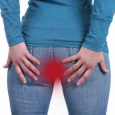Guide to Pain Management
For many people, pain is a chronic condition – or at least one that occurs frequently enough that they feel they have to seek out on-going relief for it when it rears its ugly head.
There is no one size fits all pain management tool. Everyone is different in terms of what we find effective. You have to find a tool that’s right for you – and that means understanding all of your options as well as taking precautions for safety purposes.
Understand that with long-term pain management, you might have to switch things up over time. Sometimes, with pain, a certain treatment will become less effective and you’ll need to give your body a break and try something different.
One thing you need to know as you navigate this journey is that you’re certainly not alone. The American Academy of Pain Management offers statistics that more than 50 million Americans have chronic pain. It hinders your ability to work, and can result in a lower quality of life.
What Kind of Pain Should You Be Managing?
There are many conditions that cause pain. You might suffer from one – or a combination of many conditions, making your treatment more difficult – but not impossible.
Frequent headaches are the most common type of pain that men and women seek help for. They can affect you all over your head, just behind the eyes, or on one side of your head.
They can vary from a mild, dull feeling to a throbbing, blinding migraine. Some come and go in a flash – repaired before you even have a chance to take something for it. Others won’t go away, and then you’re stuck having to find relief in some form.
The first thing you want to do is see what’s causing your headache pain. Is it stress? Your nutrition? Do you only get it after physical exertion, or when you fail to get a good night’s sleep? You might be able to manage your pain simply by making lifestyle changes.
Sometimes you have headache pain due to other medical conditions like a sinus infection – or something more serious like a blood clot or brain tumor. This isn’t usually the cause, but if your pain never ends, it’s time to make an appointment with your doctor.
Pregnancy pain is another common type of pain that people (women) seek relief for. There are many sharp, sudden or dull, lasting pains during pregnancy – and for a new expectant mother especially, this can be alarming.
Back pain affects millions of men and women – most often after the age of 30. It can be caused by a simple spasm or tenses up muscle – or something more serious like a ruptured disk or broken bone.
Sometimes it’s a symptom of another disease like Scoliosis, kidney stones, or Endometriosis. Even stress can cause back pain in a person’s body because you’re constantly tensed up during the day.
Like headaches, back pain can be mild and dull or sharp, intense and throbbing. Your best bet is to be proactive and strengthen your back to prevent injuries. Lose weight and exercise your core.
Back pain can come and go. Sometimes it will only last a day, or maybe 2-3 days. But for other people, it’s a never-ending chronic pain that has to be managed for a better quality of life.
Find a Pain Management Option That Fits Your Level of Pain
Have you ever been in a doctor’s office where they had a cute little pain chart for you to look at? No matter what your age, the doctor will point to the smiley face chart and ask what your pain level is.
The chart typically goes from a scale of 1 (no pain) to 10 (worst pain imaginable). The smiley face loses its smile as you go up the chart, until you see a red-faced icon with tears streaming down its face.
You need to first diagnose how bad your pain is. You don’t want to be getting surgery for a mild pain, and you don’t want to try treating yourself with a single dose of Aleve or Tylenol if you’ve just been hit by a car.
Frequency is an important part of your pain management strategy. Whichever option you choose, make sure that using it too often won’t actually hinder your ability to manage your pain.
Using headaches as an example, sometimes you can actually cause your own headaches because you overmedicate. Medication overuse headaches are technically known as an analgesic rebound headaches.
Track how often you use headache medicine. Is it more than twice a week? If so, you could be doing more harm than good by taking headache medicine. Not only can the frequency increase, but also the amount of pain that you have and the length it lasts.
If this happens, you have to rely less on headache medicine and more on other pain management strategies. It might feel hard to do at first but then you’ll actually suffer less intense and less frequent headaches.
Non-interfering relief is important to consider when working on a pain management strategy. You’ll often see certain pain relievers with warnings, like you might get drowsy, you shouldn’t operate machinery (like a car), etc.
If you’re dealing with frequent or chronic pain, and you have to work and stay alert, you don’t want to be out of it 24/7. In fact, even if you’re home, you don’t want to sleep your life away, so find a management tool that lets you remain active and alert if possible.
Sometimes age will factor into the equation. You never want to give a young child or even a teen a dose of pain reliever that isn’t fitting for them. And even with elderly individuals, sometimes some medications aren’t suited for them – or they may interact with other medicines negatively, so you have to be careful.
Safety with other medical conditions is important. It’s not just the medications, it’s the conditions themselves. You need to make sure that if you have any kind of medical condition, you ask your doctor if a particular pain management medication is okay for you to take.
For example, let’s say you have asthma, ulcers, or a liver or kidney disorder. You might not want to take even a simple over the counter aspirin like Excedrin because it’s not good for people with those conditions.
Medical Pain Management Sources
Aspirin, Acetaminophen or Ibuprofen are the most common pain relievers that you’re probably used to. You go to your local grocery store, pick up a bottle of Aleve or Tylenol, and you hope to rid yourself of the pain of a headache or even a mild aching back.
Prescription medications are the next step up. This is when a simple over the counter pill won’t help dull the edge of the pain you’re feeling. But the problem with these is, you usually eel drowsy and if you work and have to drive, it can cause problems by interfering with your daily routine.
Nerve blocking can be used as a solution because it’s not as invasive and risky as surgery is. This is when the doctor injects a medication directly into a spot where your nerves are causing pain to your body. It numbs the nerves so that you don’t have to feel pain in that area anymore.
Surgery is an option depending on what your type of pain is. If it’s a chronic condition and pain relievers that basically keep you sedated or drowsy aren’t an option, then you might want to consider this path.
Surgical treatment varies. Sometimes, a doctor can snip something (as in the case with a discectomy where a portion of a herniated disc is removed) and your pain is gone for good.
Other times, you may have to have something inserted into your body to help you manage pain. For example, back and neck pain might be managed with a pain pump or stimulator.
A pain pump delivers medication right to the source so that you don’t have to run to the doctor whenever you’re hurting. An electrical stimulator delivers electric impulses that help get rid of or minimize your pain.
Physical therapy can range from simple ice or heat packs to more individualized treatment where you’re working one on one with a specialist to help you regain normalcy in your life.
The trainer might have you do a variety of stretches, help you gain strength in certain areas of your body, and work with you to assist in making you more flexible.
Exercise is something your doctor might actually prescribe when you’re in pain. Again, back pain is a good example of this. There are stretches you can do on the floor to strengthen and stretch muscles without the need of a trainer.
Chiropractic therapy is perfect for those who are in pain due to a misalignment of your bones and muscles. This is a natural, non-medicated option for those seeking pain relief.
Psychiatric counseling is another thing your doctor might recommend. When you do suffer from an on-going pain issue, it can result in depression and anxiety – and that, in turn, adds to the severity of the pain.
It’s a vicious circle. Having a psychiatrist to unload your emotional stress to can help alleviate your pain to some degree, and help you to better manage it usig other therapies.
Natural Pain Management Options
Meditation and hypnosis are relaxation methods that you might try to relieve your pain. Some people don’t realize the power that your mindset – your mood and stress levels – have over how much pain you’re in.
You might find that your pain goes from an 8 on the pain chart to a 5 or 6. This type of alternative pain therapy helps you get more mileage out of your other pain relief strategies.
Deep breathing can help. Prevention Magazine had an article about how deep breathing is commonly used in childbirth to alleviate pain – but it’s not just for women delivering a baby!
At the very least, deep breathing is an opportunity for you to learn how to make the pain matter less, and not focusing on it will naturally alleviate it to some degree.
Acupuncture is a holistic practice for dealing with many things – pain being one of them. It might sound like having small needles strategically placed in your body would increase pain, but it’s just the opposite.
You might even be able to manage your pain just through your nutrition choices. Caffeine, for example, has been known to contribute to headaches. Sometimes a lack of caffeine, like when you’re weaning yourself off of sodas, can cause a headache.
There are also fun ways to manage pain that have proven effective. These are off-the-wall pain relievers that you may not have considered. They include:
- Looking at pictures of loved ones
- Shouting words (swear words for some, not for others)
- Smelling an apple – green in particular
- Socialization with friends
- Listening to music
No one should have to live in a state of pain. Even infrequent bouts can cause many people to have increased anxiety and stress. Make sure you stay aware of the frequency and length of these episodes and talk to your doctor to see what kinds of options you have.
Remember that not all doctors think alike. You may want to have a second or third opinion so that you get a well-rounded view of what you can do to manage and hopefully eliminate your pain for good.
Recommended Products For Pain Management












